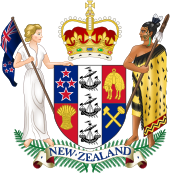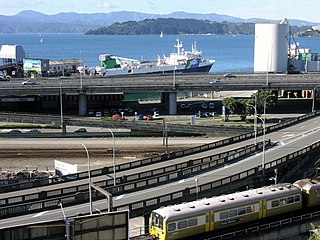
Transport in New Zealand, with its mountainous topography and a relatively small population mostly located near its long coastline, has always faced many challenges. Before Europeans arrived, Māori either walked or used watercraft on rivers or along the coasts. Later on, European shipping and railways revolutionised the way of transporting goods and people, before being themselves overtaken by road and air, which are nowadays the dominant forms of transport. However, bulk freight still continues to be transported by coastal shipping and by rail transport, and there are attempts to (re)introduce public transport as a major transport mode in the larger population centres.

New Zealand is divided into sixteen regions for local government purposes. Eleven are administered by regional councils, and five are administered by unitary authorities, which are territorial authorities that also perform the functions of regional councils. The Chatham Islands Council is not a region but is similar to a unitary authority, authorised under its own legislation.
The New Zealand state highway network is the major national highway network in New Zealand. Nearly 100 roads in the North and South Islands are state highways. All state highways are administered by the NZ Transport Agency.
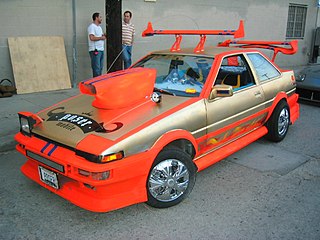
Boy racer is a term given to a young person who drives in a fast and aggressive manner; it has become a broader term for participants in modern custom car culture who tune and modify cars with street racing-style aftermarket cosmetic and performance parts such as body kits, audio systems and exhausts. The culture encompasses a broad range of car types including sport compacts and economy cars typical of the import scene, this is in contrast with the hot rod culture of previous generations. Some car enthusiasts and modifiers feel the term labels them as deviant and anti-social and are keen to distance themselves from the term. Boy racer is a term mostly but not exclusively associated with the UK, in Australia and New Zealand hoon is sometimes preferred. In the US, "Rice boy" or "Ricer" is a derogatory term for the driver or builder of an imported hot rod, or someone who modifies their car in a cheap way to imitate the look of a higher performance vehicle.

Rail transport in New Zealand is an integral part of New Zealand's transport network, with a nationwide network of 4,375.5 km (2,718.8 mi) of track linking most major cities in the North and South Islands, connected by inter-island rail and road ferries. Rail transport in New Zealand has a particular focus on bulk freight exports and imports, with 19 million net tonnes moved by rail annually, and 99.5% of New Zealand's exports and imports being transported through the country's seaports.

David William Parker is a New Zealand Labour Party politician who served as Attorney-General, Minister for the Environment, Minister of Transport and Associate Minister of Finance in the Sixth Labour Government. He previously served as a Cabinet Minister in the Fifth Labour Government, Deputy Leader of the New Zealand Labour Party and Deputy Leader of the Opposition from September 2013 to September 2014, and as interim Leader of the Labour Party from September to November 2014. He represented the Otago electorate at the 47th Parliament and has since served as a list MP.
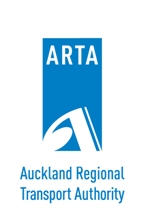
The Auckland Regional Transport Authority (ARTA) was the central co-ordinating agency for transport in the Auckland Region of New Zealand from 2004 to 2010. In this role, ARTA provided public transport services, assigned funding and subsidies, and organised and advised on many aspects of regionwide transport. ARTA was under the control of the Auckland Regional Council (ARC) and was replaced by Auckland Transport on 1 November 2010.
Transit New Zealand, which existed from 1989 to 2008, was the New Zealand Crown entity responsible for operating and planning the New Zealand state highway network. It also concerned itself with developments close to state highways, as it considered the potential additional traffic that these would create, and it was responsible for state highway landscaping.

The states and territories of Australia are the first-level administrative divisions of the country. The states are self-governing polities that are partly sovereign, having ceded some sovereign rights to the federal government. They have their own constitutions, legislatures, executive governments, judiciaries and law enforcement agencies that administer and deliver most public policies and programs. Territories can be autonomous and administer local policies and programs much like the states in practice, but are still legally subordinate to the federal government.

The Civil Aviation Authority of New Zealand (CAA) is the government agency tasked with establishing civil aviation safety and security standards in New Zealand. The CAA also monitors adherence to those standards and is responsible for enforcement proceedings. The authority "investigates and reviews accident and incident investigations in its capacity as the responsible safety and security authority, subject to the limitations set out in section 14(3) of the Transport Accident Investigation Commission Act 1990" (TAIC). CAA is also responsible for managing civilian pilot, aerodrome and aircraft licensing in New Zealand. The CAA has its headquarters in the Asteron Centre in Featherston Street, Wellington.

The Transport Licensing Act 1931 was a New Zealand Act of Parliament regulating land transport. It was introduced following a Royal Commission on road and rail competition in 1930. The Act also regulated aspects such as safety and insurance requirements for carriers and the regulation of public passenger services.

Public transport in New Zealand exists in many of the country's urban areas and takes a number of forms. Bus transport is the main form of public transport. Two major cities, Auckland and Wellington also have suburban rail systems that have been gaining more patronage and new investment in recent years. Some cities also operate local ferry services. There are no rapid transit metros and no remaining tram systems active anywhere in New Zealand, though trams once had a major role in New Zealand's public transport.
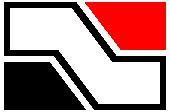
New Zealand Railways Corporation (NZRC) is the state-owned enterprise that owns the land beneath KiwiRail's railway network on behalf of the Crown. The Corporation has existed under a number of guises since 1982, when the old New Zealand Railways Department was corporatised followed by deregulation of the land transport sector. In 1986, the Corporation became a State-owned enterprise, required to make a profit. Huge job losses and cutbacks ensued, and the rail network, rail operations and ferry service of the Corporation were transferred to New Zealand Rail Limited in 1990. The Corporation retained ownership of the land beneath the railway network, and charged a nominal rental to New Zealand Rail, which was privatised in 1993, and renamed Tranz Rail in 1995. In 2004, following a deal with Tranz Rail's new owners Toll NZ, the Corporation took over responsibility for maintaining and upgrading the rail network once more, trading under the name ONTRACK. Negotiations with Toll over track access charges concluded after four years with no agreement reached, so the government purchased the entire rail and ferry operations, naming the service KiwiRail. ONTRACK's railway infrastructure and employees were then transferred to KiwiRail in 2008, which itself was initially a subsidiary of the Corporation. On 31 December 2012, the Corporation once again became the landowner.
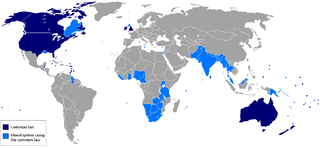
The law of New Zealand uses the English common law system, inherited from being a part of the British Empire.
The New Zealand Geographic Board Ngā Pou Taunaha o Aotearoa (NZGB) has authority over geographical and hydrographic names within New Zealand and its territorial waters. This includes the naming of small urban settlements, localities, mountains, lakes, rivers, waterfalls, harbours and natural features and may include researching local Māori names. It has named many geographical features in the Ross Sea region of Antarctica. It has no authority to alter street names or the name of any country.
Land Transport New Zealand was a Crown entity in New Zealand, tasked with promoting safe and functional transport by land, and includes responsibilities such as driver and vehicle licensing. It was created on 1 December 2004 by the Land Transport Management Amendment Act 2004, was the successor entity to the disestablished Land Transport Safety Authority and Transfund New Zealand, and was disestablished from 31 July 2008, merging with Transit New Zealand to become the NZ Transport Agency.
NZ Transport Agency Waka Kotahi (NZTA), is a New Zealand Crown entity tasked with promoting safe and functional transport by land, including the responsibility for driver and vehicle licensing, and administering the New Zealand state highway network. Waka Kotahi means 'one vessel' and is intended to convey the concept of "travelling together as one".
